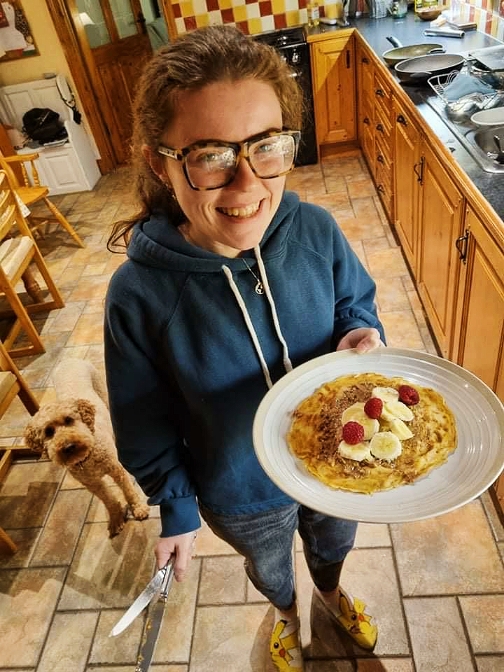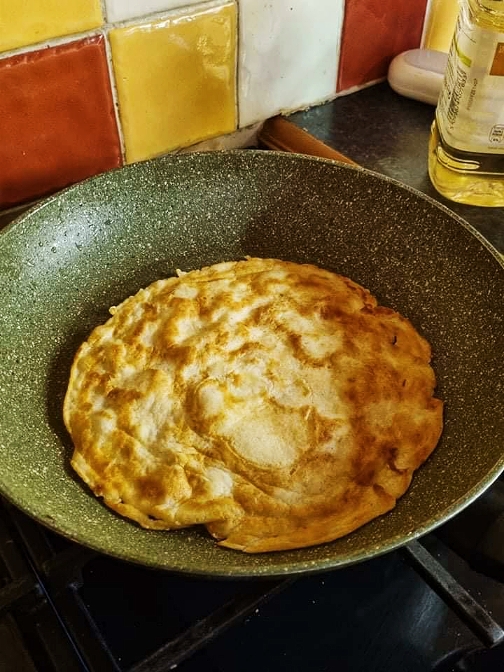
Pancake Tuesday: The Irish version of Fettisdagen
Glad Fettisdagen! Or should I say, Happy Pancake Tuesday instead?
As you might all know, every year around late February or early March, Swedes celebrate Fettisdagen, which translates to ”Fat Tuesday”. Traditionally, this is the official day for eating semla, a delicious whipped cream and almond paste bun. When I first moved to Sweden, I thought Swedes were geniuses for coming up with the perfect excuse to skip their diet and enjoy unhealthy and fatty food during a specific day. Little did I know this brilliant idea was not exactly theirs. For a couple of weeks now, all grocery stores in Ireland have been selling ready-to-use pancake mixes and announcing the so awaited ”Pancake Tuesday”. Curious about this, I made a little search on the origins of this celebration. Keep on reading if you want to discover what I found out and learn a typically Irish pancake recipe from my lab collegue’s mum!
A little bit of history
As many things in our current society, Pancake Tuesday (also known as Shrove Tuesday, Fat Tuesday, White Tuesday or Mardi Gras), the Irish equivalent of Fettisdagen, finds its roots in Christian religion. It is the day before the Catholic festival Ash Wednesday and it is followed by Lent. Lent commemorates the 40 days of fasting that Jesus did in the dessert, as part of his ministry. In fact, Shrove Tuesday represents the last feast prior to the beginning of the fasting period, which ends with the start of Easter Season. Because of this, dates of Pancake Tuesday change from year to year.
Historically, on Shrove Tuesday, Catholics would have a final blowout of meat, eggs, and other animal products, all of the forbidden foods during Lent. Particularly, eggs were used for cooking pancakes, which is how Shrove Tuesday ended up becoming Pancake Tuesday in the modern times. Although few Christians keep up with the tradition of Lent (to my knowledge, it is mostly Orthodox circles that stick to it strictly), the fasting has turned into an opportunity to cut down on sugars and candy (and other unhealthy temptations) during those 40 days until Easter. Last year, all the people of the lab where I am working did Lent, but less of them were willing to resist cravings this year!
Sheila’s pancake recipe
Unfortunately, last Tuesday I did not have time to cook pancakes myself. On the bright side, my lab collegue, Niamh, shared the pancake process step-by-step with me so that I could live the experience along with her. She also sent me the pancake recipe of her mum, Sheila, who after years of practice has improved it to the maximum perfection level. Just to clarify, Irish pancakes are more like French crepes, rather than American pancakes. So, for those who like cooking (or eating as well), here you have Sheila’s traditional Irish pancake recipe. Special credits to Sheila her fantastic recipe and many thanks to Niamh for all the deliciously-looking pictures!

Ingredients
For about 6 crepe style Irish pancakes you will need:
- 300 ml of whole milk
- 1 medium sized egg
- 100 g of all-purpose flour
- 1/2 tsp (pinch) of salt
- 1 tbsp of Irish salted butter (and some more for frying)
Steps to follow
- Sift the flour into a bowl and mix it with the pinch of salt.
- Create a whole in the centre of the flour, add the egg (whisked) and 50 g of melted butter and mix properly.
- Gradually add the milk trying to avoid forming lumps, and continue mixing until all ingredients are nicely incorporated and you obtain a smooth liquid/batter.
- If possible, let the batter sit overnight (this will strengthen the flavours when frying the pancakes). Alternatively, allow it to rest for at least 30 minutes (the more the batter rests, the tastier your pancakes will be).
- After this time, heat a frying pan at maximum temperature and turn it down to medium heat once it is hot.
- Grease the pun with butter and pour 1/6 of the batter in the pan, tilting it to coat all the base with the batter mixture.
- Cook for about 2-3 minutes, flip the pancake over (with a spatula or in the air, depending on your chef skilsl), and cook for another 1-2 minutes on the other side.
- Repeat the same procedure with the rest of the batter, and then your pancakes will be ready! You can put them on a warm plate as you cook them so that they are not cold when served. Besides, according to my Irish corridor mate in Stockholm, Sophie, it is a MUST to have the traditional topping: just sprinkle some sugar an lemon juice on top of the pancakes and they are ready to be eaten. Of course, you can also choose other types of toppings, such as berries, chocolate, banana, etc. ENJOY!





0 kommentarer